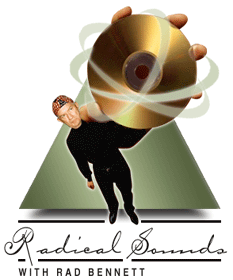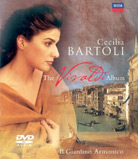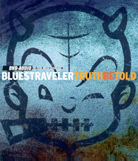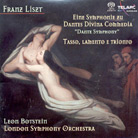| February 1, 2004
 Radical
Sounds: Patricia Barber via Mobile Fidelity, A Chicago Wind that Blows Nothing but Good
It isn’t often that I devote
this introduction to an entire series of recordings by the same artist or recording
company. As you know, I look for the very best to bring to readers, and even the best
performers and recording teams seem to have dips now and then. Radical
Sounds: Patricia Barber via Mobile Fidelity, A Chicago Wind that Blows Nothing but Good
It isn’t often that I devote
this introduction to an entire series of recordings by the same artist or recording
company. As you know, I look for the very best to bring to readers, and even the best
performers and recording teams seem to have dips now and then.
Not Patricia Barber and engineer Jim Young. Barber has
recorded four CDs that have been picked up by Mobile Fidelity Sound Lab and released as
Hybrid Stereo SACDs: Café Blue (1994), Modern Cool (1998), Companion
(1999), and Nightclub (2000). Put on any one of them and prepare to be mesmerized
by Barber’s deceptively casual, languorous singing and keyboard playing. She has
talent to burn, and is not afraid to take risks. On Modern Cool, she covers the
Doors’ "Light My Fire"; on Café Blue, she nails "Ode to Billy
Joe" in a version that will make you forget Bobby Gentry’s original hit version
forever; and on Companion she swings "The Beat Goes On," made famous by
Sonny and Cher. In between, she does near-definitive versions of such jazz standards as
"Autumn Leaves," "You Don’t Know Me," and "The Thrill Is
Gone." She also writes her own bluesy ballads, excellent observations of life in and
out of the fast lane. One of these, "Touch of Trash," contains a line that has
become one of my favorites of all time: "She’s just a button short of
trash." Patricia Barber is a triple threat: keyboard virtuoso, singer extraordinaire,
and songwriter supreme.
Barber has also attracted the best artists to her side.
Michael Arnopal is the best bass player alive -- he plays in tune, even in higher
registers, and he has a sense of the composition that is uncanny, placing just the right
emphasis on the right beat. Listen to his hand-in-glove work with Barber on "Ode to
Billy Joe" -- jazz dialogue does not get any better. The drummers for the latest CDs
are fine, but the drummer for the first two is the remarkable Mark Walker. He’s my
idea of what a drummer should be, accenting the musical lines with the subtlest ideas I
have heard. So many drummers just beat their instruments, pumping out the rhythm in a
monotonous drone. Not Walker, who caresses and weighs every stroke. When he, Barber,
Arnopal, and guitarist John McLean are together, as on Café Blue, the result is
expressive jazz that can’t be beat.
But this column is about sound, and the sound on these
SACDs is breathtaking. Every instrument is caught in just the right light, with just the
right microphone. I’ve heard a lot of intimate jazz CDs, and I’ve never heard
better recording of string bass and drums. I’ve heard sound that is clear but has
little warmth, sound that has warmth yet minimum presence. These recordings have
everything. Clarity, subtlety, presence, warmth -- all the good descriptors -- apply at
the same time: a singular event.
The liner notes make it clear that both artists and
engineers go to great lengths, and are willing to experiment, to get the best sound.
Mobile Fidelity has transferred the wonderful masters with uncanny accuracy, and the SACD
format allows every minute detail to be heard with absolute clarity. These discs can serve
as textbook examples of how to do it.
If you have the winter blues, do yourself a favor and buy
these four albums. Yes, all four -- it’s a sure bet that if you hear one, you’ll
be hypnotized into buying the rest.
Here are three more I heard this month that make the Radical
cut and should provide you lots of listening pleasure:
 Cecilia
Bartoli: The Vivaldi Album Cecilia
Bartoli: The Vivaldi Album
Cecilia Bartoli, mezzo-soprano; Arnold Schoenberg Choir, Il Giardino Armonico; Giovanni
Antonini, conductor.
Decca B0001290-19, DVD-Audio. Contains MLP 5.0 and 2.0 mixes, Dolby Digital 5.0 mix.Cecilia Bartoli is one of the wonders of today’s classical
music world. Blessed with a rich, warm voice and an innate sense of lyricism, she can
essay any normal aria with ease. But Bartoli has more -- she is a coloratura virtuoso who
tosses off the most difficult, intricate, rapid passages with wild abandon, making them
sound like child’s play. Freed of any technical limitation, Bartoli can pay attention
to the texts, and brings great insight and drama to any aria she sings. She can also
venture where other singers dare not tread; this DVD contains worthy arias that are
obscure only because most singers lack the chops to cut them.
Decca has finally ventured into the realm of DVD-Audio, and
The Vivaldi Album presents a most accurate recording of Bartoli’s impressive
voice. The chamber orchestra, placed behind her, emerges with great clarity. The plucked
strings, harpsichord, and lute at the beginning of "Dite, Oimè" are magical.
This delicate passage requires both high resolution and a noise floor of zero, and this
disc provides both. The surrounds are used only for ambience -- there is no sense of the
orchestra being wrapped around the listener -- but the rear reverb creates wonderful
"you are there" presence.
There are a few extras: a badly reproduced photo gallery, a
frame-by-frame (not continuous video) interview, a list of other albums by Bartoli, and
production credits. Though these features are skimpy, the printed DVD booklet is
reasonably complete, including full texts and wonderfully reproduced historic art and
artist photos.
|
 Blues
Traveler: Truth Be Told Blues
Traveler: Truth Be Told
Silverline 288214-9, DVD-Audio. Contains MLP 5.1 and Dolby Digital 5.1 tracks.Following in the footsteps of other extended-jam bands such as Led
Zeppelin and the Grateful Dead, Blues Traveler has survived tragedy to confidently emerge
with their best album yet. This amiable set has fewer hard-edged rock influences and more
blues inflections. Founder John Popper’s vocals and blues-perfect harmonica solos are
still at the center, and that’s good news. The rest of the five-man band is filled
out with virtuoso players, and the whole ensemble is tight as can be. The sound is
impressive in not calling attention to itself as such. All of the instruments sound
extremely natural, and there is an impressive sense of cohesive ensemble. The bass is very
tight and clean, and all three front speakers create the vocals. There is some panning to
the rear channels, but largely the attention is placed on the front soundstage.
|
 Liszt: Dante
Symphony; Tasso: lamento e trionfo Liszt: Dante
Symphony; Tasso: lamento e trionfo
London Symphony Orchestra, Leon Botstein, conductor.
Telarc SACD-60613, Hybrid Multichannel SACD.Liszt
composed this sprawling, two-movement Dante Symphony while writing the more famous Faust
Symphony. Neither work is a "symphony" in the formal sense, but a
large-scale symphonic poem that suggests a story in music. Dante was dedicated to
one of Liszt’s great musical heroes (and his future son-in-law), Richard Wagner. Its
story is that of Dante Alighieri’s Divine Comedy -- of a soul’s
progression from Hell to Heaven. The first movement, Inferno, is effectively
bombastic in portraying the nether regions of Christian mythology. The second, Purgatorio,
deals with the soul’s release from bondage, and contains quieter yet rapturous music
that builds to a final climax that adds a chorus to the large orchestra.
The interpretation and playing are first-rate on both this
work and the single-movement tone poem Tasso: lamento e trionfo, which fills out
the disc. The articulation of rapid passages in both is outstanding, and the sound
throughout is of demonstration caliber. The sound of the basses and cellos in the first
movement of the Dante is as awesome as the playing. The front soundstage is wide
and deep, each instrument clearly defined in its proper position on stage. The surround
channels create the impression of a large concert hall with deep reverberation. The
frequency range is singularly good, everything from the highest violin note to the lowest
growl of basses and bass drum reproduced without a hitch. The higher resolution of the
SACD layer gives a graphic sense of presence that the bit-challenged CD layer can’t
quite reproduce. All in all, an outstanding release, and the best that conductor Leon
Botstein has recorded for Telarc. |
...Rad
Bennett
radb@ultraaudio.com

All contents copyright Schneider Publishing Inc., all rights
reserved.
Any reproduction, without permission, is prohibited.
Ultra Audio is part of the SoundStage! Network.
A world of websites and publications for audio, video, music, and movie enthusiasts. |

 Radical
Sounds: Patricia Barber via Mobile Fidelity, A Chicago Wind that Blows Nothing but Good
It isn’t often that I devote
this introduction to an entire series of recordings by the same artist or recording
company. As you know, I look for the very best to bring to readers, and even the best
performers and recording teams seem to have dips now and then.
Radical
Sounds: Patricia Barber via Mobile Fidelity, A Chicago Wind that Blows Nothing but Good
It isn’t often that I devote
this introduction to an entire series of recordings by the same artist or recording
company. As you know, I look for the very best to bring to readers, and even the best
performers and recording teams seem to have dips now and then.
 Cecilia
Bartoli: The Vivaldi Album
Cecilia
Bartoli: The Vivaldi Album Blues
Traveler: Truth Be Told
Blues
Traveler: Truth Be Told Liszt: Dante
Symphony; Tasso: lamento e trionfo
Liszt: Dante
Symphony; Tasso: lamento e trionfo